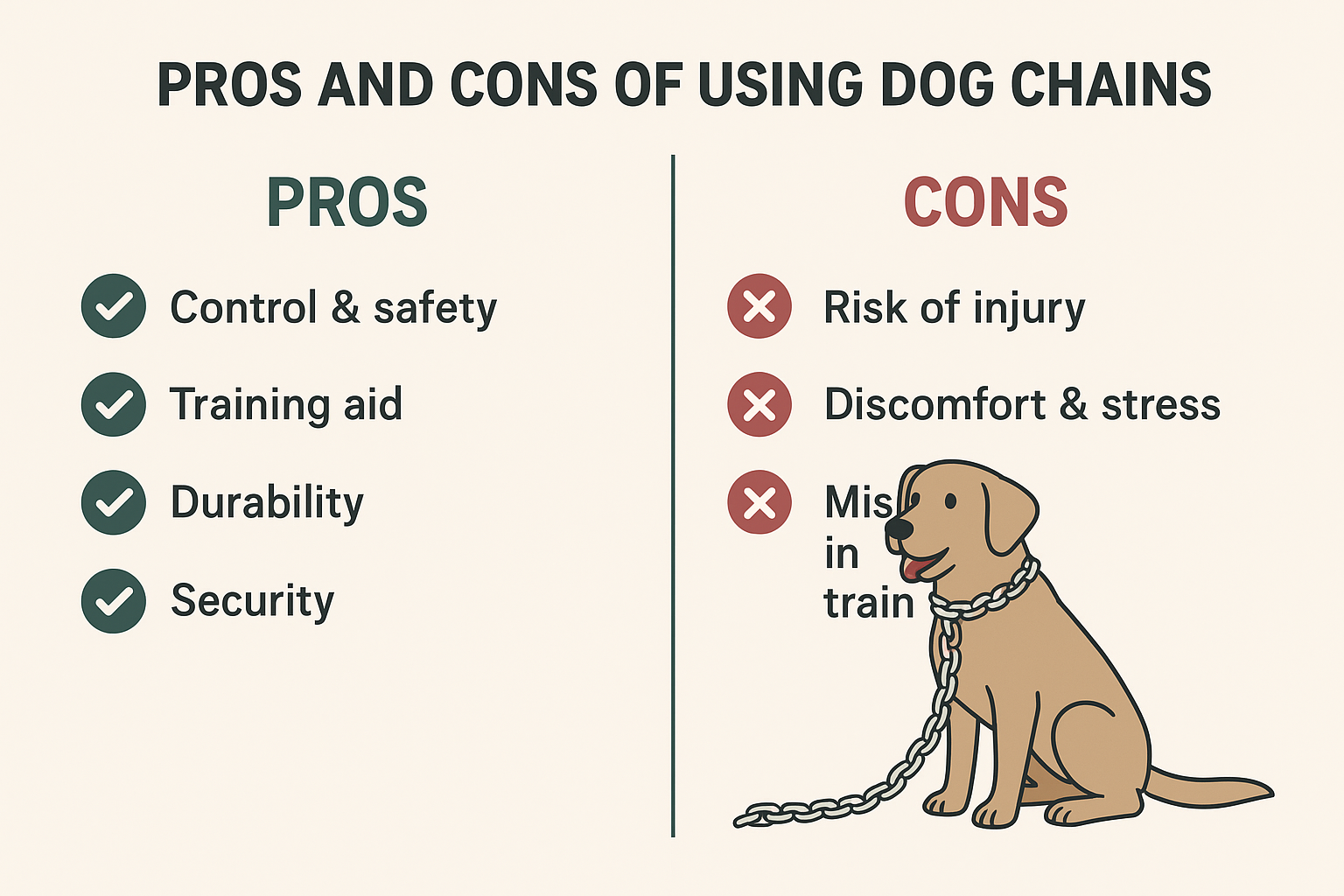When it comes to pet ownership, one of the most common tools people use for controlling or restraining their dogs is a chain. Dog chains are often chosen for their durability and strength, especially for larger breeds. However, like any tool, they come with both benefits and drawbacks. Understanding the pros and cons of using dog chains can help pet owners make more informed decisions and ensure the well-being of their furry companions.
Pros of Using Dog Chains
1. Strength and Durability
One of the primary advantages of dog chains is their strength. Chains are typically made from metal, which makes them highly durable and resistant to chewing. Dogs, especially strong or large breeds, often chew through leather or nylon leashes. A chain can withstand this behavior, making it a reliable option.
2. Security
Dog chains provide a sense of security for owners. Strong chains are less likely to snap or break compared to weaker materials. This ensures that your dog stays under control during walks or when tied up temporarily.
3. Longevity
Unlike fabric or leather leashes, chains can last for years if maintained properly. They don’t wear out easily, which can save money in the long run. Chains also hold up well in harsh weather conditions, such as rain or snow.
4. Control for Larger Dogs
For owners of large or powerful dogs, chains provide better control. A sturdy chain can help prevent sudden lunges or pulls, making it easier to manage dogs that are difficult to handle.
Cons of Using Dog Chains
1. Weight and Discomfort
Chains are often heavy, which can make them uncomfortable for smaller dogs. Carrying the extra weight can cause strain on their neck and body. Even for larger dogs, prolonged use may lead to discomfort.
2. Risk of Injury
Metal chains can cause injuries if not used properly. For example, if a dog pulls too hard, the chain can strain the neck or cause bruising. Dogs tied with chains for extended periods are also at risk of choking, tangling, or even long-term physical harm.
3. Negative Impact on Behavior
Keeping a dog chained for long periods can lead to behavioral problems such as aggression, frustration, or anxiety. Dogs are social animals that need interaction and freedom to move. Chains that restrict mobility may negatively affect their mental health.
4. Lack of Flexibility
Unlike fabric or retractable leashes, chains are stiff and less flexible. This can make walks less enjoyable, both for the pet and the owner. Chains don’t absorb shock, so sudden pulls can be jarring for both ends of the leash.


